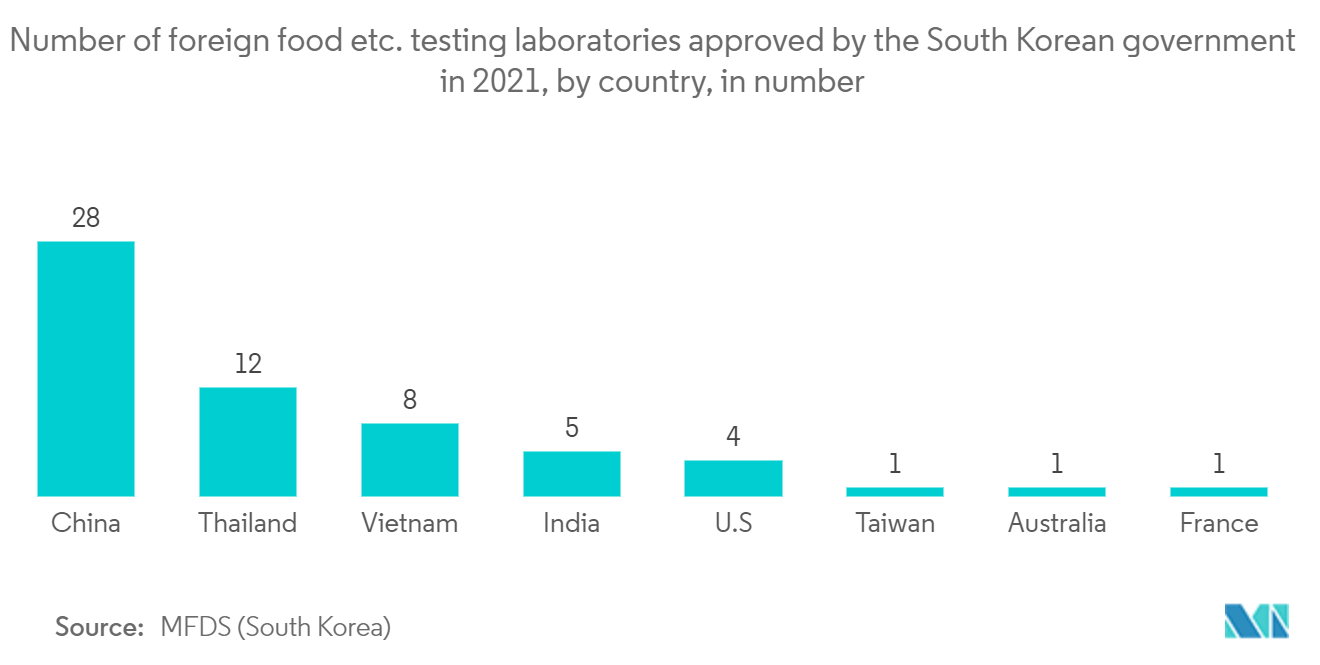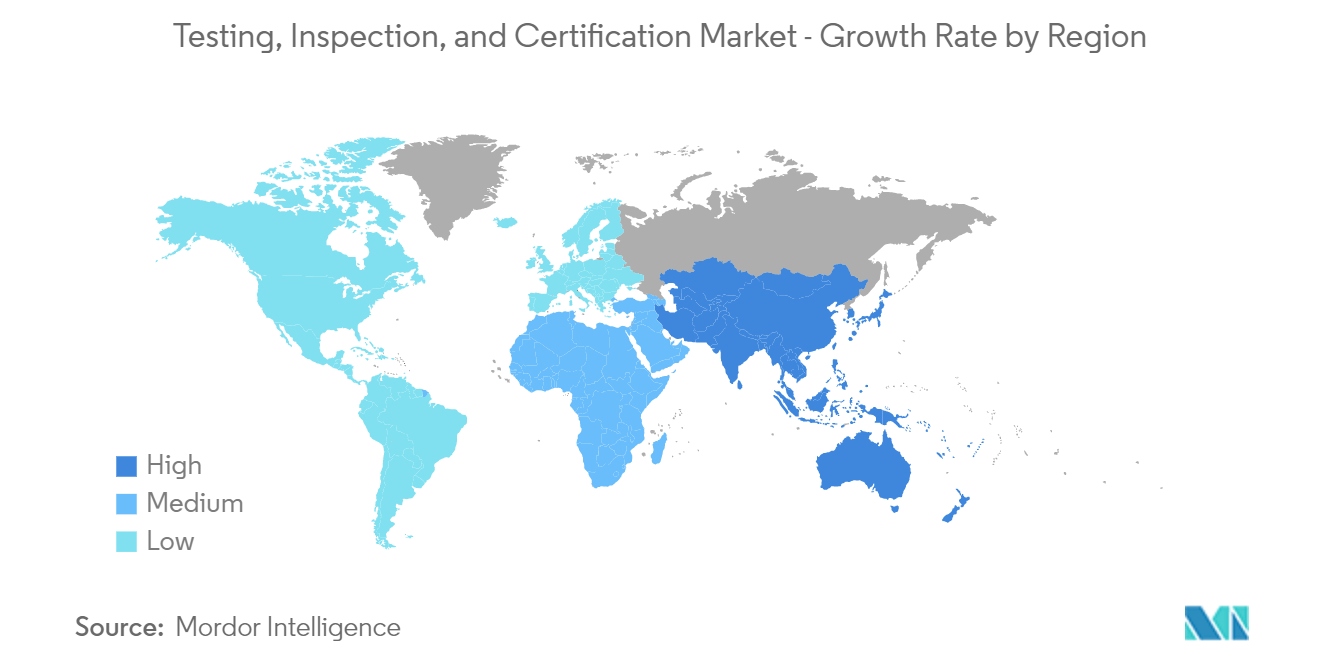Market Trends of Testing, Inspection, And Certification Industry
Food and Agriculture Expected to Hold a Significant Market Share
- The most important components of quality control across a range of industries, including the food industry, are testing, inspection, and certification (TIC). Maintaining the standards for food safety and quality depends on TIC. Creating novel, inventive solutions (such as virtual inspections and remote audits) to solve the COVID-19 conundrum and utilizing cutting-edge technology in the food industry contribute to the expansion of the TIC sector. Utilizing TIC services, businesses may boost productivity, lower risk, and improve the quality, compliance, and safety of their products and services while still conforming to global standards.
- In recent years, consumer awareness of food quality and safety problems has increased, mostly as a result of debates around recent food recalls and the pandemic's increasing concern for cleanliness and safety. In the public and commercial food sectors, this has made creating several standards for food safety and quality easier.
- Due to the increased incidences of adulteration and substance mixing in food products, such as oils and milk, a reliable TIC system is needed. Additionally, consumers are becoming more informed about hazards and frauds. Procedures for testing, certifying, and inspecting products guarantee their quality, safety, and confidence.
- The food testing, inspection, and certification market is growing and has a sizable growth potential in the coming years. The rise in the prevalence of foodborne diseases, technological advancements in testing, the globalization of the food supply, and stringent international standards for food safety are the main factors driving the growth of the market for food testing, inspection, and certification.
- At every point along the value chain, from harvest to manufacture to consumption, contaminants and chemicals have the potential to contaminate food. Therefore, food quality management is necessary since contamination can be a serious cause of food poisoning. The need for food safety testing services in the area has risen due to strict laws enforcing food safety standards in the United States and Canada. The adoption of the U.S. Food Safety Modernization Act (FSMA) signals a rise in the need for food safety testing on a global scale.
- In addition to that, the World Health Organization (WHO) introduced its accepted Global Strategy for Food Safety 2022-2030 on October 17, 2022. By bolstering food safety systems and encouraging international collaboration, the strategy will direct and support WHO Member States in their efforts to prioritize, plan, execute, monitor, and routinely review measures towards minimizing foodborne diseases.
- According to the MFDS, South Korea, about half of all foreign food testing facilities authorized by the South Korean government were located in China as of 2021. The source states that there were a total of 60 such international laboratories.

Asia-Pacific Holds the Largest Market Share
- The Asia-Pacific region is anticipated to hold a significant market share due to emerging markets in countries such as China, India, Japan, and South Korea, which have become attractive through the development of indigenous industries and subsequent acceleration in exports, the introduction of stringent standards, and rapid urbanization.
- Emerging markets, such as China, have become attractive spots through developing indigenous industries and subsequent acceleration in exports, the introduction of stringent standards, and rapid urbanization.
- China's "Made in China 2025" initiative has identified 5G as an emerging industry. It offers opportunities for Chinese companies to become more competitive and innovative in the global market and prevent low-quality and counterfeit goods from entering the market, which the attainment of domain-specific certifications can achieve.
- Like other key Asia-Pacific countries, Japan is active in the downstream oil and gas sector. After the Fukushima plant accident, the shutdown of multiple nuclear power plants for safety purposes in the country made Japan largely dependent upon fossil fuels for all its energy needs.
- Owing to low domestic production in the country, the Japanese government has encouraged its energy companies to increase exploration and development projects globally to secure a stable oil and natural gas supply. These initiatives make Japan one of the major exporters of capital equipment for the energy sector and make the industry one of the country's significant adopters of TIC services.
- On the manufacturing front, the South Korean government plans to turn the nation's robotics technology into a USD 25 million industry, focusing on becoming the fourth-largest player by the end of 2023. This is fostering the emergence of robotic companies. However, companies must acquire industrial robot product safety certification based on international and local standards to bring such robots into the manufacturing and service sector.

